The federal government’s housing accord commenced on 1 July 2024 and aims to construct 1.2 million dwellings over five years, equivalent to 20,000 homes per month.
On Wednesday, the Australian Bureau of Statistics (ABS) released dwelling approvals data, which revealed that 15,400 homes were approved for construction in February, 4,600 (23%) below the target.
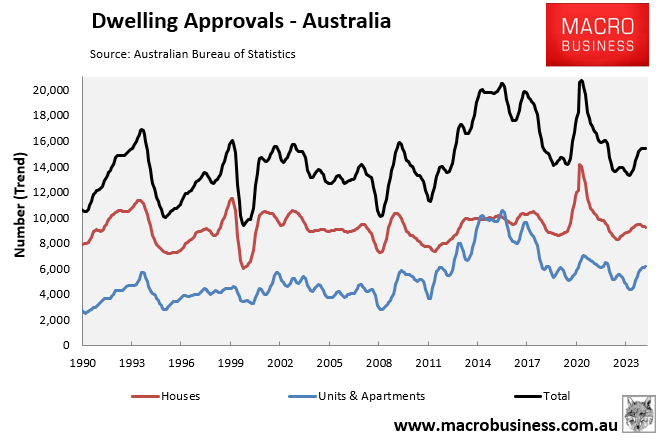
Over the first eight months of the housing accord, only 123,800 dwellings were approved for construction, 36,200 (23%) below the target of 160,000.
In the year to February 2024, only 178,600 homes were approved for construction, well below the 240,000 required to meet the Housing Accord’s target.
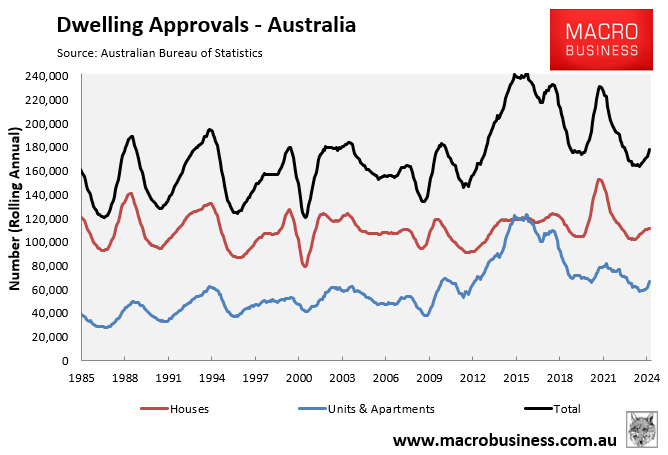
The following chart plots the latest monthly approvals against quarterly commencements, completions, and population growth.
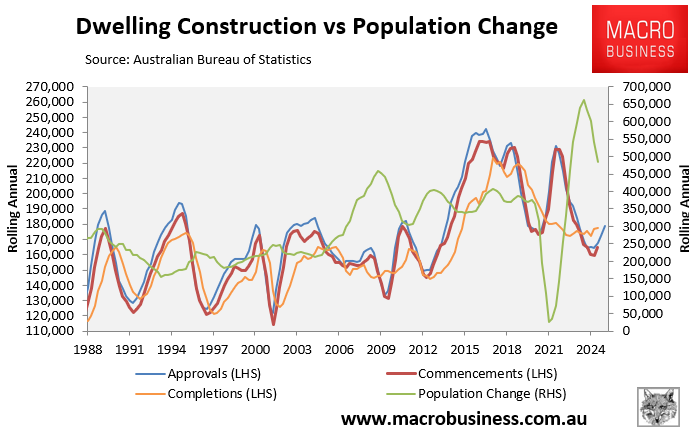
It is important to note that merely being approved for construction does not guarantee that the home will be built.
Over the history of the ABS’s dwelling construction series, 6% more dwellings have been approved for construction than were completed.
As a result, Australia’s rate of housing construction is likely lagging even further behind the Housing Accord’s target.
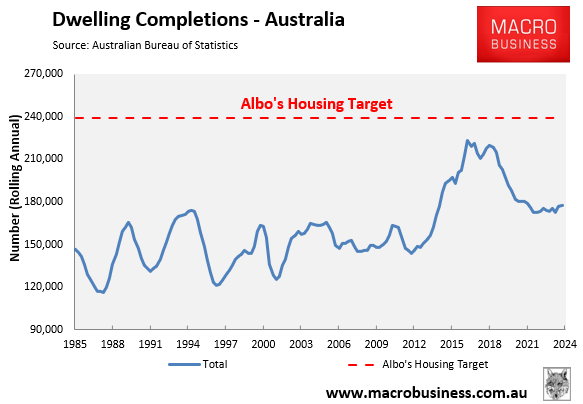
Indeed, the Urban Development Institute of Australia (UDIA) recently forecast that housing completions would fall 393,000 short of the target for the combined capital cities alone by 2029, amid high construction costs and chronic labour shortages.
“Housing supply shortages are set to continue due to elevated (and still growing) material input costs, labour shortages, combined with high inflation leading to cost of living pressures and interest rate rises”, the UDIA said.
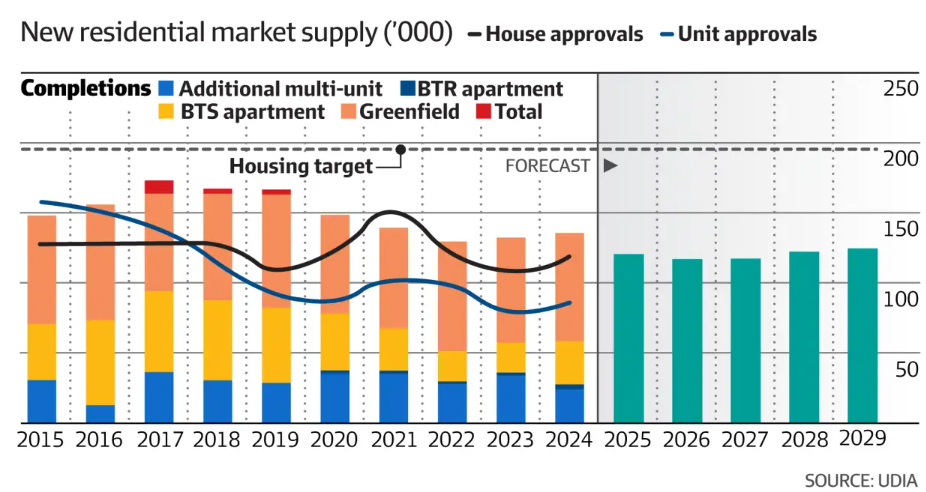
Brickworks CEO Mark Ellenor agreed that the government’s target is “not going to go close to being met”, citing a backlog in services to provide water and sewerage connections to new developments.
The supply side of Australia’s housing market is likely to remain constrained for the foreseeable future due to
- Structurally higher interest rates;
- Structurally higher building costs;
- Labour shortages; and
- High builder insolvencies.
This means that the only viable solution to the housing shortage is to bring demand back into line with supply by cutting net overseas migration.
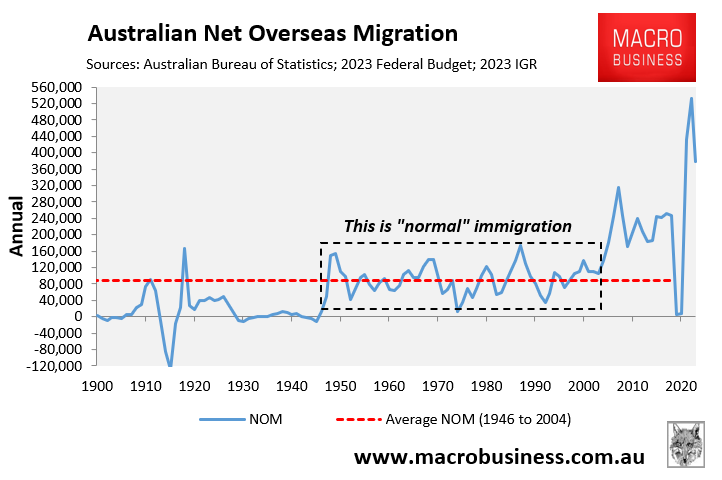
The latest federal budget, released last week, projected that Australia’s population would grow by 1.8 million people over the next five years, with 1.4 million of this increase landing in Victoria (544,000), New South Wales (486,000), and Queensland (412,000).

Source: March 2025 Federal Budget
Policymakers cannot expect to solve the housing shortage by importing hundreds of thousands of extra demand into the market every single year.
The math doesn’t add up for housing.

